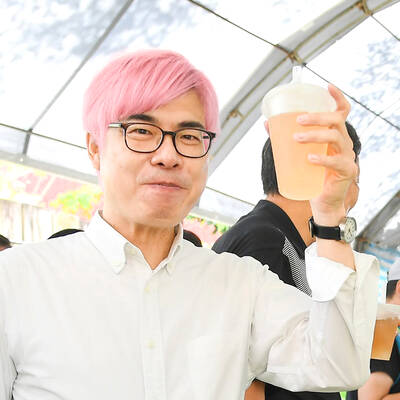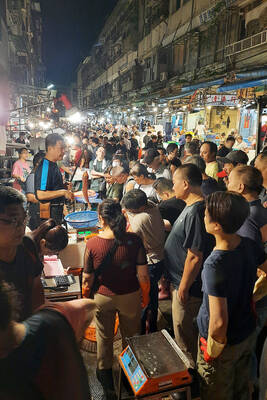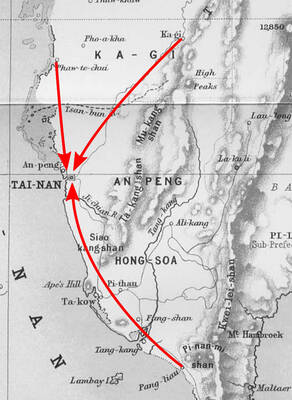“Narco Polo” is the new fashion trend sweeping lower-class neighborhoods in Mexico, inspired by seven high-ranking drug traffickers who were arrested over a three-month stretch wearing open-neck, short-sleeved jerseys with the familiar horseman-with-a-stick emblem.
The polo shirts are becoming ubiquitous in street vendors’ stalls from the drug-war-ravaged state of Tamaulipas to the cradle of Mexican drug trafficking, Sinaloa.
Demand is so high that a Mexico City street vendor named Felipe stocks several colors, and names them after the drug lord who was wearing that color at the time of his arrest.
“This is the ‘J.J,’’’ he says, pointing to a blue one, “and this is ‘La Barbie,’” indicating a green number. That was a reference to Jose Jorge (“J.J.’’) Balderas, who allegedly dealt drugs and shot soccer star Salvador Cabanas in the head, and to US-born Edgar Valdez Villarreal, “La Barbie.”
Despite their Ralph Lauren labels, the shirts on sale on Mexico City streets for 160 pesos (US$13.50) are clearly pirated goods, sold by unlicensed vendors like Felipe who don’t want their full names used for fear of attracting police attention.
But some of Felipe’s customers have their first names embroidered on the back of the shirts, a service he offers for an extra fee, as a sort of dare.
It’s probably not the demographic that designers at Ralph Lauren were thinking of for their polo shirts. The company did not respond to several requests for comment about the shirts’ popularity in Mexican criminal circles.
The shirt La Barbie wore when captured appeared to be the only potentially authentic one of the bunch. The rest of the drug traffickers appeared to be wearing cheap knockoffs of the US$98 to US$145 Ralph Lauren “Big Pony” jerseys.
The shirt is becoming so pervasive that it provoked public grumbling from Sinaloa Governor Mario Lopez Valdez.
“Now you see how these shirts like La Barbie’s have become the fashion,” said Lopez Valdez. While he didn’t suggest an outright ban, he told a local radio station that “I think we have to close off everything that promotes criminal behavior.”
He complained that the fad glorifies traffickers.
“Many young people want to emulate them as idols in some way ... and they want to be drug traffickers. And there are a lot of young girls who want to be the girlfriends of drug traffickers.”
But it may not be sheer adulation; wearing the shirts may also be a way for youths to thumb their noses at authority, a time-honored pastime among young people around the world.
“To the police, it’s a message that says ‘I could be a drug trafficker and walk right in front of you and you can’t say anything to me because I’m just wearing a shirt,’” said Oscar Galicia Castillo, a psychologist at the IberoAmerican University who studies prison inmates. “Many youths are also using it as a way of making fun of snobbish status markers.”
For Pedro, who sells snacks at a stand on a downtown Mexico City street, his light blue polo shirt just represents an indefinable sense of cool. He said the shirts had become all the rage in his tough neighborhood of Tepito, and that his wife bought him one as a surprise.
“It looks good. It gives you class,” he said. He declined to give his last name, saying police had recently caught him selling cigarettes to minors.
In some rough barrios, a shirt that conveys a vague sense of menace and a “don’t mess with me” attitude may be helpful.
“The guys who buy them want people to think they’re tough,” said Cesar, a counterfeit-shirt vendor who said most of the customers at his downtown Mexico City stall are young males. “It’s about putting on a look.’’
For at least two decades, Mexicans have fretted about youths emulating drug traffickers, from the days when narcos favored the designs of Versace and exotic-leather boots, or marijuana-leaf insignia on belt buckles, shirts and baseball caps. But such trends remained largely regional, and were derided as tacky.
But the new fashion trend has been helped along by a new, more urbane and sophisticated generation of drug traffickers, who dress more like Mexico’s wealthier classes.
Last year, Vicente Zambada Niebla, the son of drug lord Vicente “El Mayo” Zambada, was arrested in an upscale Mexico City neighborhood wearing a preppy ensemble of sports coat, jeans and striped cotton shirt.
Vicente Carrillo Leyva, the son of another drug lord, was collared around the same time wearing a jogging suit emblazoned with the name “Abercrombie.”
Media coverage also can promote the trend. Newly captured capos are paraded before television cameras wearing the latest narco-fashion, often with beautiful girlfriends at their sides. Authorities allow some, like J.J., to sit down for interviews looking self-assured, fit and unrepentant.
“My business improved. Everybody wanted to work with me,” Balderas said of the notoriety he achieved while a wanted man.
It wouldn’t be the first time designers have faced an unexpected market. Uber-preppy designer Tommy Hilfiger’s clothes became a must-have item for inner-city youths a few years ago.
For Galicia Castillo, the psychologist, it’s all about standing out, identifying oneself as a member of a certain sector of a crowded world, probably much the same reason people shell out US$145 for the original: “That’s why I wear it, so that everyone will look at me, will see that I can afford this. And I could be a narco, so don’t mess with me.”

The Taipei Times last week reported that the rising share of seniors in the population is reshaping the nation’s housing markets. According to data from the Ministry of the Interior, about 850,000 residences were occupied by elderly people in the first quarter, including 655,000 that housed only one resident. H&B Realty chief researcher Jessica Hsu (徐佳馨), quoted in the article, said that there is rising demand for elderly-friendly housing, including units with elevators, barrier-free layouts and proximity to healthcare services. Hsu and others cited in the article highlighted the changing family residential dynamics, as children no longer live with parents,

It is jarring how differently Taiwan’s politics is portrayed in the international press compared to the local Chinese-language press. Viewed from abroad, Taiwan is seen as a geopolitical hotspot, or “The Most Dangerous Place on Earth,” as the Economist once blazoned across their cover. Meanwhile, tasked with facing down those existential threats, Taiwan’s leaders are dying their hair pink. These include former president Tsai Ing-wen (蔡英文), Vice President Hsiao Bi-khim (蕭美琴) and Kaohsiung Mayor Chen Chi-mai (陳其邁), among others. They are demonstrating what big fans they are of South Korean K-pop sensations Blackpink ahead of their concerts this weekend in Kaohsiung.

Taiwan is one of the world’s greatest per-capita consumers of seafood. Whereas the average human is thought to eat around 20kg of seafood per year, each Taiwanese gets through 27kg to 35kg of ocean delicacies annually, depending on which source you find most credible. Given the ubiquity of dishes like oyster omelet (蚵仔煎) and milkfish soup (虱目魚湯), the higher estimate may well be correct. By global standards, let alone local consumption patterns, I’m not much of a seafood fan. It’s not just a matter of taste, although that’s part of it. What I’ve read about the environmental impact of the

Oct 20 to Oct 26 After a day of fighting, the Japanese Army’s Second Division was resting when a curious delegation of two Scotsmen and 19 Taiwanese approached their camp. It was Oct. 20, 1895, and the troops had reached Taiye Village (太爺庄) in today’s Hunei District (湖內), Kaohsiung, just 10km away from their final target of Tainan. Led by Presbyterian missionaries Thomas Barclay and Duncan Ferguson, the group informed the Japanese that resistance leader Liu Yung-fu (劉永福) had fled to China the previous night, leaving his Black Flag Army fighters behind and the city in chaos. On behalf of the